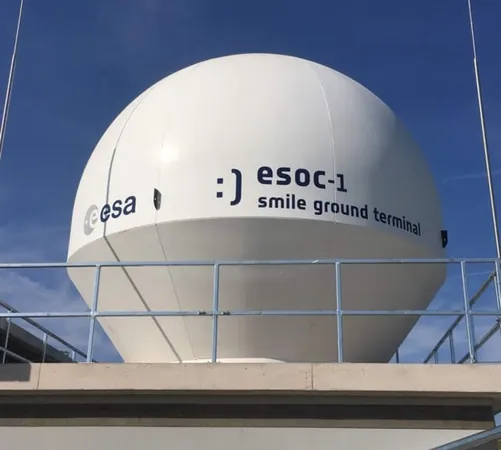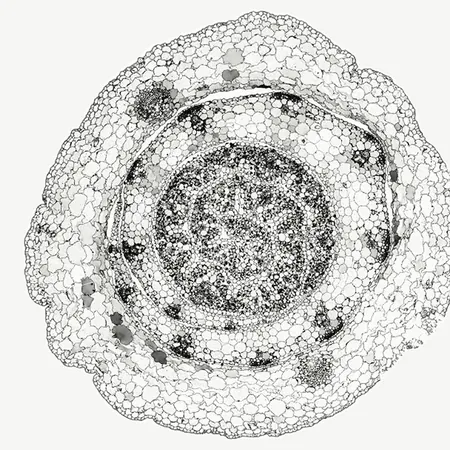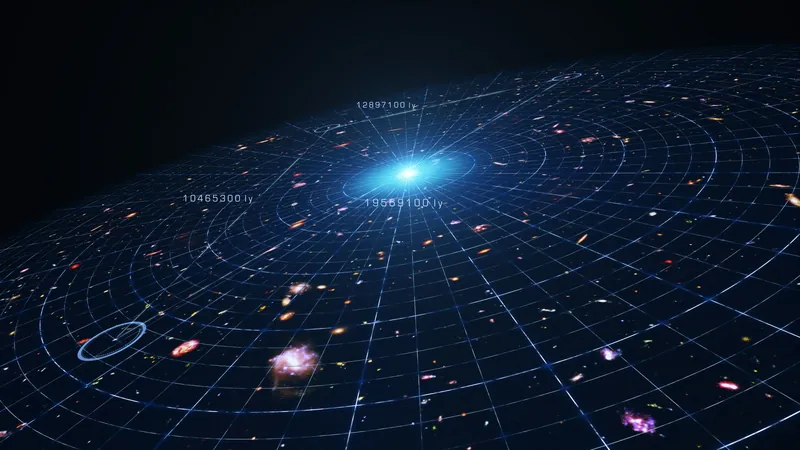
Revolutionary SMILE Antenna Set to Transform CubeSat Missions
2024-11-21
Author: Mei
Introduction
On November 10, 2024, the grand finale of an exciting mission unfolded as three Australian CubeSats bid farewell to Earth's atmosphere. These satellites, Binar-2, Binar-3, and Binar-4, launched from the International Space Station on August 29, had captured the imagination of many as they soared through the skies, orbiting approximately 400 km above sea level. For those fortunate enough to be looking up that evening, the sight of three brilliant streaks across the night sky marked the culmination of a highly successful mission.
The Role of SMILE Antenna
At the heart of this mission's success lay the SMILE (Special Mission Infrastructure Lab Environment) antenna located at the European Space Agency's (ESA) operation center in Darmstadt, Germany. The only uplink antenna based in the Northern Hemisphere, SMILE played a pivotal role in tracking and monitoring the CubeSats as they traversed the globe. Over the course of their mission, these satellites utilized a network of antennas worldwide, further underscoring the collaborative efforts in the realm of space exploration.
Facilities and Capabilities
The SMILE facility, designed to support flexible mission control and various operations, has been open to businesses, universities, and organizations from ESA member states since 2019. It comprises a state-of-the-art laboratory and a configuration of four versatile antennas supporting multiple frequency bands, including S-Band, X-Band, and UHF. This adaptability allows various entities, from academic institutions to startups, to explore innovative solutions in satellite technology.
Collaboration and Insights
Melanie Flentge, a Ground Operations Engineer at ESA, expressed pride in the opportunity to collaborate with the team behind the CubeSats. "We were thrilled to provide our 70 cm amateur radio UHF frequency band antenna for the duration of their mission," she said. "The collaboration not only enhanced our capabilities but also provided invaluable operational experience, optimizing the configuration to meet the satellites' needs." Diogo Marinho, a Station Engineer, noted the challenges the mission presented, particularly the necessity of simultaneously tracking the three satellites during their brief orbit. "The successful implementation of complex software-defined radio functions will benefit future CubeSat missions, providing a substantial leap forward for both academic research and private enterprises."
Gratitude and Future Prospects
The project manager of the Binar Space Program at Curtin University, Fergus Downey, expressed gratitude for ESA's support. "Working with the ESA SMILE team has been exhilarating. The valuable information provided regarding the state of all three satellites greatly aided our operations," he stated. "We urge other universities and companies to take advantage of the SMILE facilities for their missions. We're eager to continue our partnership."
Conclusion
This mission underscores the strengthening cooperative ties between Australia and the European Space Agency, particularly since 2018, fostering advancements in spacecraft technology, remote operations, radiofrequency communications, and mission architecture. The collaboration is evident not only in CubeSat launches but also in broader projects involving Earth observation and space science. Nestled just 140 kilometers north of Perth, ESA operates the New Norcia station, home to a powerful 35-meter deep-space antenna, a symbol of this thriving relationship. With another deep-space antenna set to join the fleet by the end of 2025, the future of space exploration for both ESA and Australia appears brighter than ever. As the world continues to innovate and push the boundaries of what is possible in space, the SMILE antenna, along with collaborative efforts like that of the Binar Space Program, represents the dawn of a new era in satellite technology and exploration. Stay tuned for more groundbreaking developments!


 Brasil (PT)
Brasil (PT)
 Canada (EN)
Canada (EN)
 Chile (ES)
Chile (ES)
 España (ES)
España (ES)
 France (FR)
France (FR)
 Hong Kong (EN)
Hong Kong (EN)
 Italia (IT)
Italia (IT)
 日本 (JA)
日本 (JA)
 Magyarország (HU)
Magyarország (HU)
 Norge (NO)
Norge (NO)
 Polska (PL)
Polska (PL)
 Schweiz (DE)
Schweiz (DE)
 Singapore (EN)
Singapore (EN)
 Sverige (SV)
Sverige (SV)
 Suomi (FI)
Suomi (FI)
 Türkiye (TR)
Türkiye (TR)